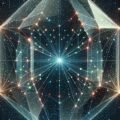On April 8, 2024, people throughout parts of North America will be treated to a rare total solar eclipse. Provided that weather conditions are favorable for viewing, this event is guaranteed to provide a unique experience.
According to NASA, this rare, once-in-a-generation celestial event will traverse North America as it passes over Mexico, the United States, and Canada and plunge these areas into darkness. While eclipses are not uncommon, the rarity of this April’s total solar eclipse lies in that these celestial events don’t happen often in the same places, generally requiring between 400 and 1,000 years before they are visible again along the same path.
Where and when to see the total eclipse
A total eclipse is where the Moon moves between the Sun and Earth by completely blocking the Sun’s face and casting a shadow on Earth. People viewing the eclipse from locations where the Moon’s shadow completely covers the Sun (known as the path of totality) will experience a total solar eclipse.
Astronomer Marc D’Antonio told The Debrief that the total solar eclipse will occur because “the Moon has a slightly elliptical orbit, [and] this time around the point where it is closest to the Earth happens to coincide with the moon passing in front of the Sun.”
Beginning over the South Pacific Ocean, the first location in North America to witness totality, weather conditions permitting, will be Mexico’s Pacific coast at approximately 11:07 a.m. PDT.
The eclipse’s path progresses from Mexico, crossing into the United States through Texas and traveling through Oklahoma, Arkansas, Missouri, Illinois, Kentucky, Indiana, Ohio, Pennsylvania, New York, Vermont, New Hampshire, and Maine. Small portions of Tennessee and Michigan will also witness the total solar eclipse.
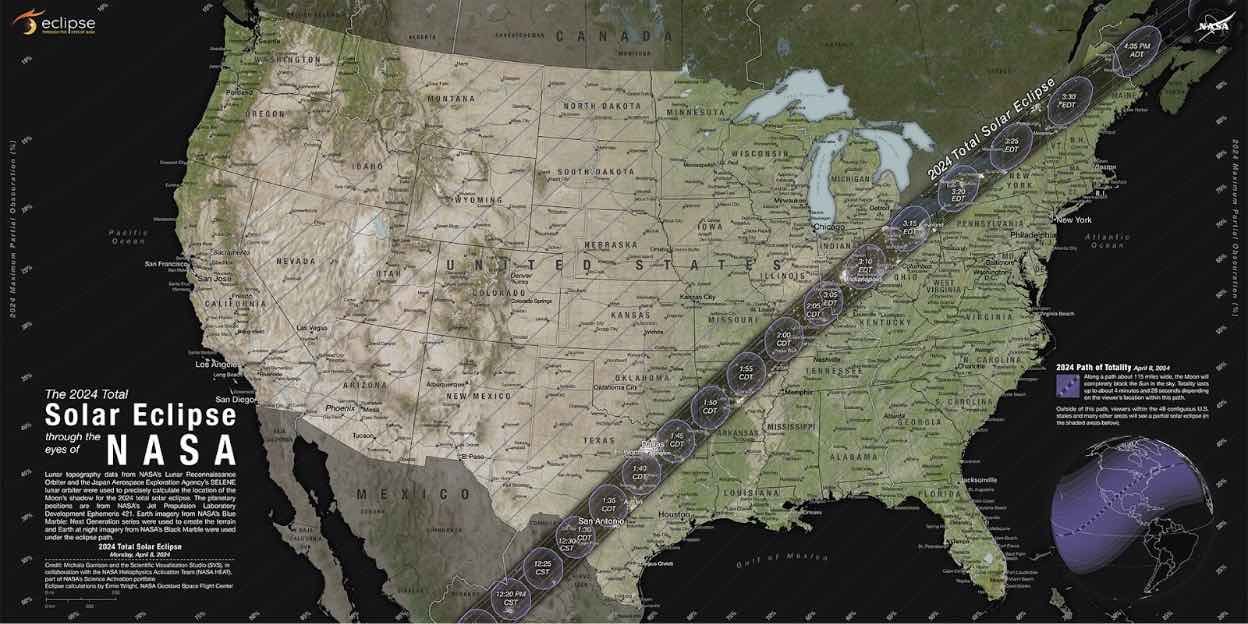

In Canada, the eclipse will enter Southern Ontario, proceeding through Quebec, New Brunswick, Prince Edward Island, and Cape Breton. The eclipse will conclude its continental North American voyage on the Atlantic coast of Newfoundland, Canada.
NASA has provided the following table that shows where the total eclipse will commence in the United States and cross over various US cities. These places will also see a partial eclipse before and after the total eclipse.
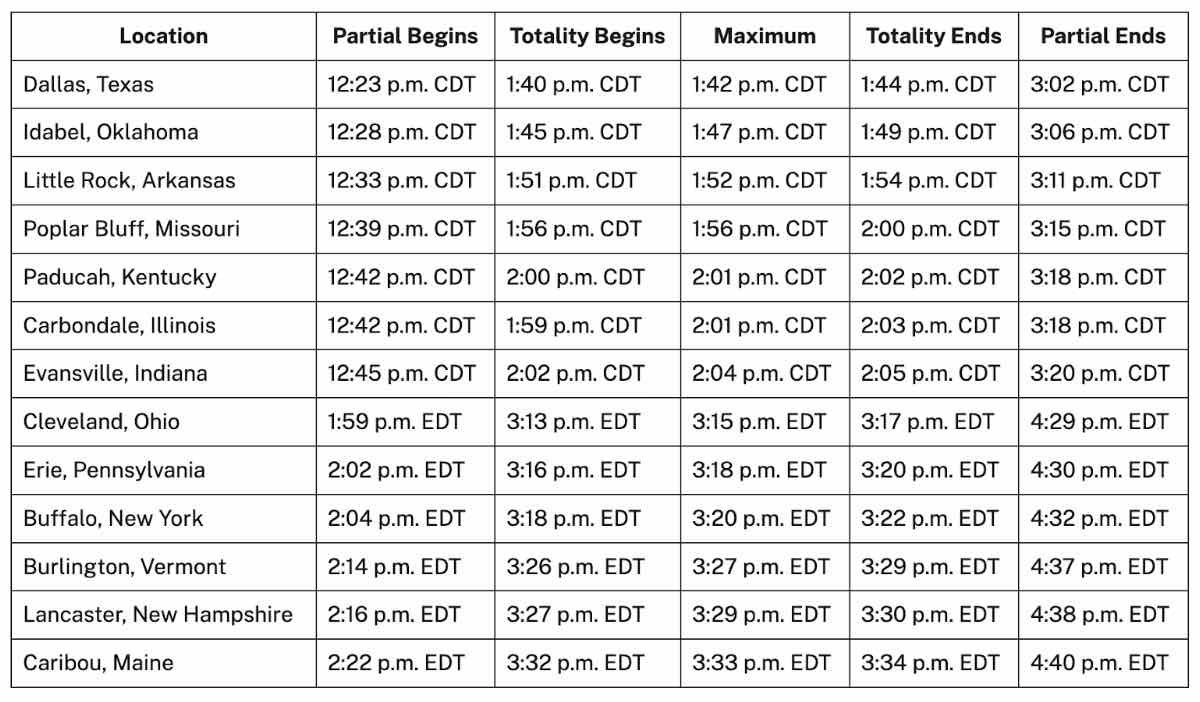

What to expect
During the total eclipse, the sky will darken, resembling dawn or dusk. If the weather is clear, people along the path of totality will be able to view the Sun’s corona, its outer atmosphere fully hidden by the Sun’s bright face.
To see the total solar eclipse at its best, the weather must be favorable, allowing for clear skies with an unobstructed view of the Sun and Moon. However, the daytime darkness associated with the eclipse will still be present even under cloudy conditions. Viewers who are outside of the path of totality (where the moon’s shadow completely blocks the sun, which is a narrow strip of land about 100 miles wide) will only be able to view a partial eclipse.
Compared to the last eclipse in 2017, viewers can expect a longer experience. In 2017, the totality duration was 2 minutes and 40 seconds. However, April’s total eclipse is expected to last twice as long, clocking in at 4 minutes and 28 seconds.
Marc D’Antonio says that “one VERY COOL thing you can do is photograph the shadows of trees on the ground. Since leaves will have tiny pinprick holes in them by and large from insect action, you will actually see hundreds of little tiny eclipses perfectly rendered in the shadow of the tree from the holes in those leaves.
“Sometimes this makes the BEST memory of a solar eclipse,” D’Antonio said. “It is QUITE striking!”
Stages of a solar eclipse
Astronomy professionals, enthusiasts, and scientists will also have the opportunity to witness several unique phenomena during a total solar eclipse, such as its Partial phase, Shadow Bands, Baily’s Beads, and the Diamond Ring effect.
Partial
The partial eclipse occurs as the Moon begins its path across the Sun. Known as “first contact”, this is when the Moon’s shadow touches the Sun’s edge, resulting in a distinctive crescent shape that begins to grow and appear.
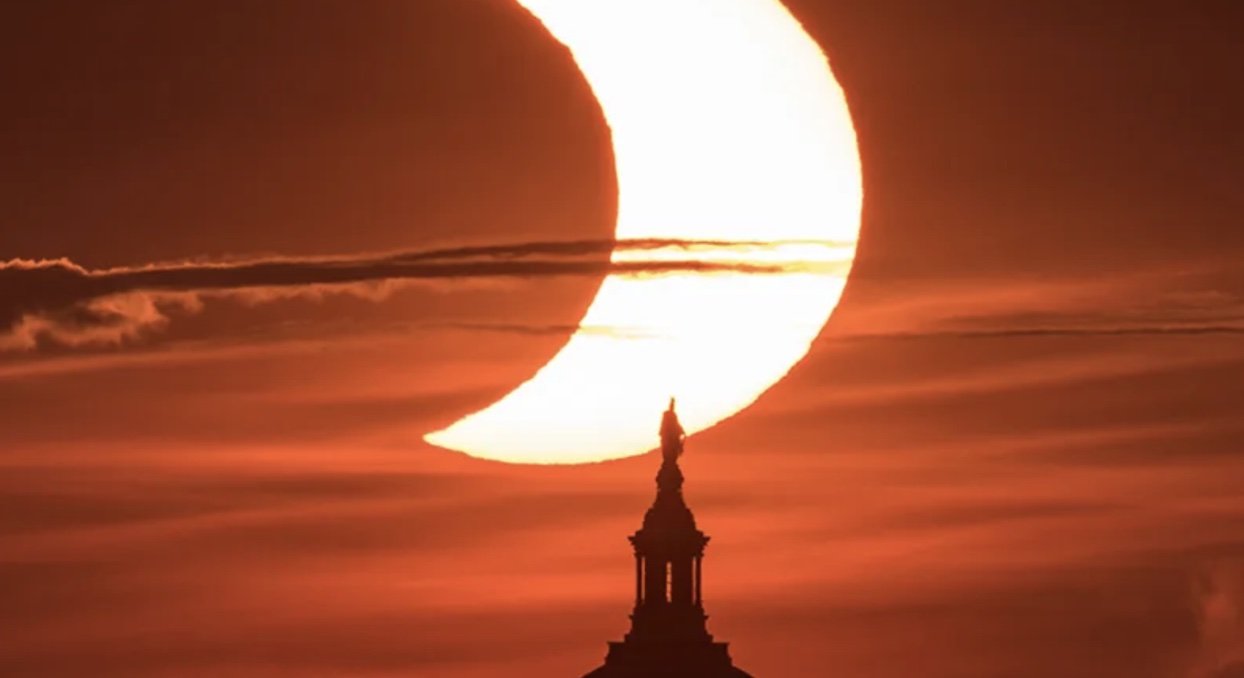

Shadow Bands
Shadow bands are fast-moving, long, dark bands with white spaces between them that are visible on the sides of buildings or the ground just before and after totality. However, they can often be very faint and challenging to capture in photographs.
Baily’s Beads
As the Moon reaches the point of almost total coverage of the Sun, points of light can be observed around its edges. These are known as Baily’s Beads, a phenomenon caused by sunlight shining through the valleys along the Moon’s horizon. Baily’s Beads are brief and may not be visible to all observers of the total solar eclipse.
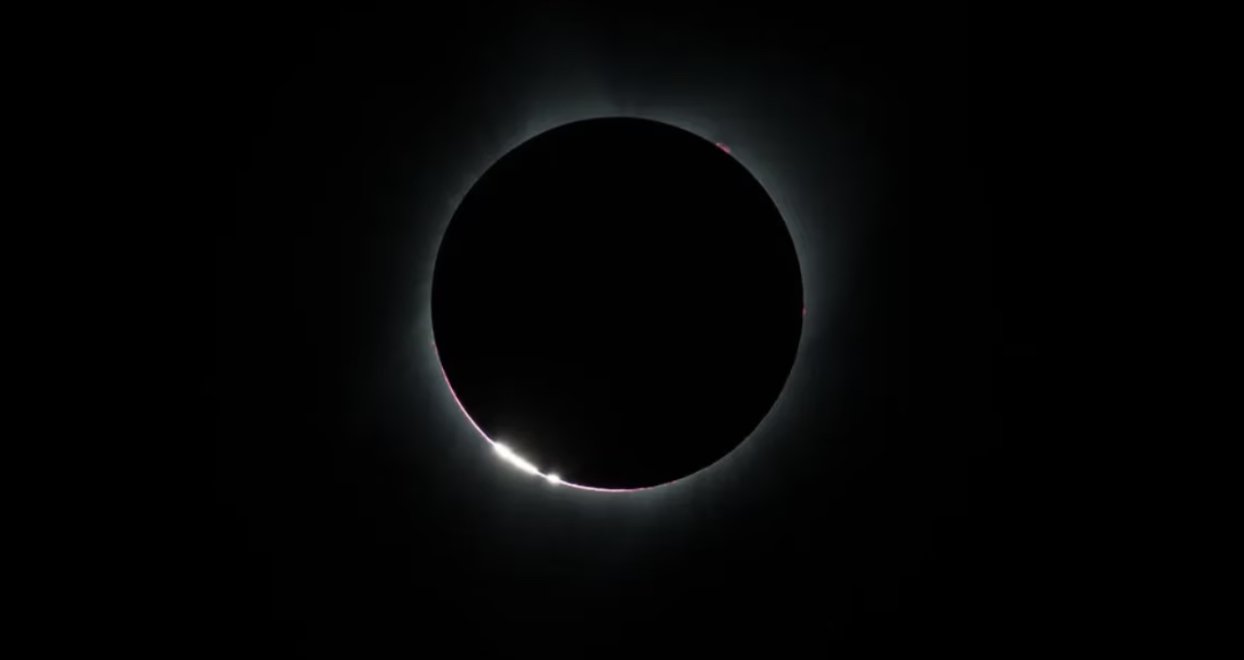

Diamond Ring
As Baily’s Beads disappear, only a single bright spot will linger along the edge of the Moon’s shadow. This bright spot resembles the diamond in a giant diamond ring created by the Sun’s remaining atmosphere. NASA reminds you to keep your glasses on throughout this entire phase.


Totality
NASA refers to the moment of totality as “second contact,” where eclipse viewers will be able to see the chromosphere (a region of the solar atmosphere, appearing as the thin circle of pink around the Moon) and the corona (the outer solar atmosphere, appearing as streams of white light). Experts recommend viewers be mindful of their sight as Totality only lasts a minute or two in some locations, so it’s suggested to wear solar proactive eyewear at all times.
During totality, viewers should take a moment to observe their surroundings. Some might witness a 360-degree sunset, see bright stars or planets in the darkened sky, such as Jupiter and Venus, experience a sudden drop in air temperature, or even an eerie silence. If viewers have their binoculars handy, Comet 12P will also be visible in its position near Jupiter.
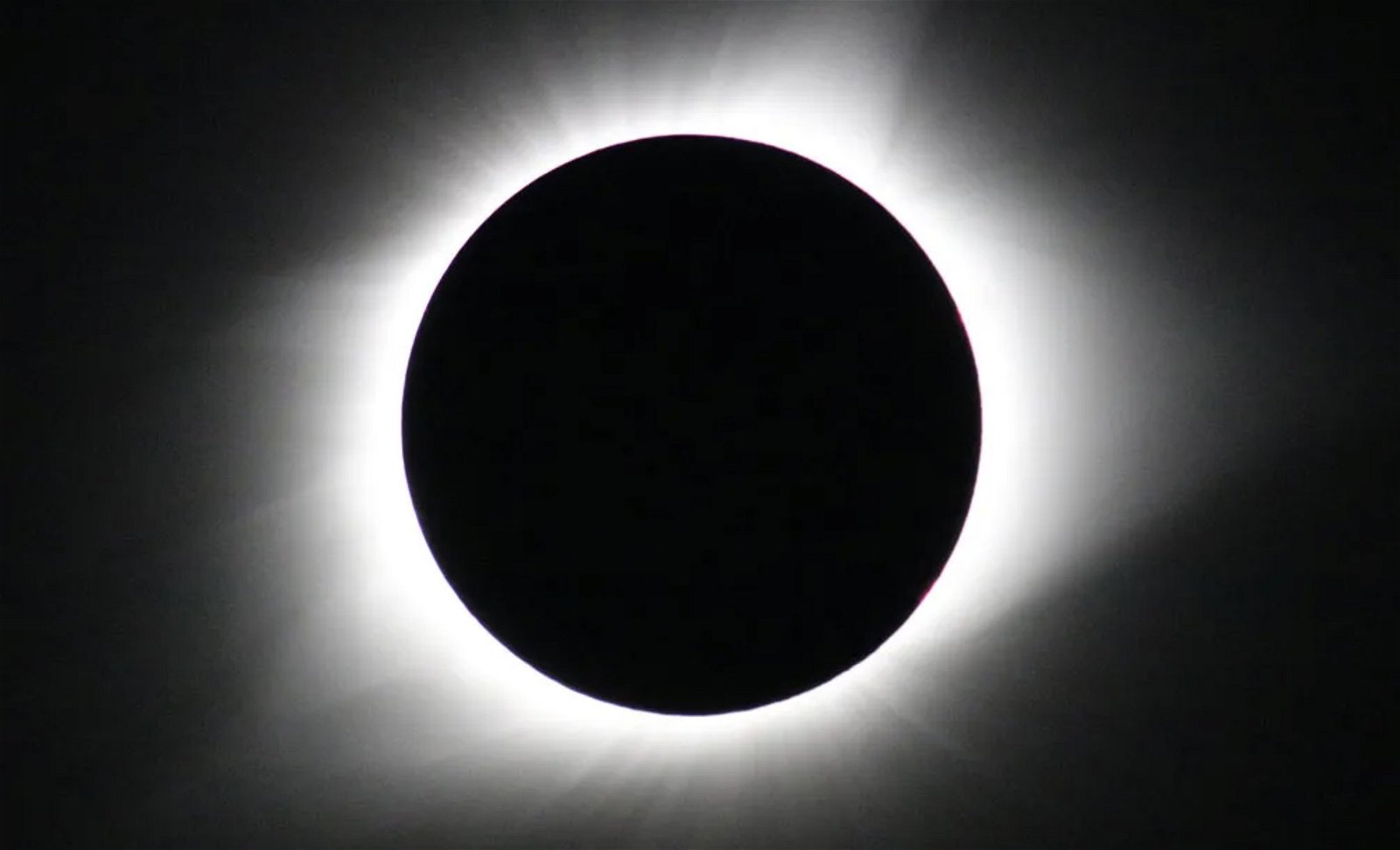

Brightening Reappears
As the Moon continues its journey across the Sun, viewers will witness brightening on the opposite side where the diamond ring glowed at the beginning. This area is considered the lower atmosphere of the Sun, where the Sun is beginning to emerge from behind the moon. This moment is called the “third impact.” Once again, experts recommend that solar eyewear remain on throughout this entire period.
Viewers will again see the diamond ring, Baily’s Beads, and shadow bands during the final stages of the eclipse before the entire Sun reappears. “Fourth contact” describes the point at which the Sun is no longer covered by the moon’s shadow. This is how to know when the eclipse is completely over.
What issues might arise from a total solar eclipse?
North Americans should be prepared as various issues may arise from the total eclipse on April 8, such as minor interruptions to solar power systems and changes to traffic patterns. Hundreds of schools across North America are planning to close during the eclipse as well, and authorities in the path of the eclipse have reminded skywatchers not to look directly at the sun, as this could lead to permanent eye damage.
Power in states like Texas may be affected since a fair degree of its electrical grid relies on solar energy. The Electric Reliability Council of Texas (ERCOT) has said that the total solar eclipse will most likely affect solar production in Texas between 12:10 p.m. and 3:10 p.m. CDT.
“ERCOT is working on forecasting models to reflect reduced solar power production and does not expect any grid reliability concerns during the eclipse,” a communications representative for ERCOT told The Debrief. “ERCOT anticipates sending at least two market notices as we approach the eclipse. ERCOT will continue to monitor conditions and keep the public informed through our communications channels.”
Traffic in several regions along the eclipse’s path could be impacted. Reports suggest that drivers may become distracted, potentially leading to congestion. Additionally, first responders are worried about large crowds gathering to view the eclipse, which could strain local resources.
Tim Menard, CEO and Founder of LYT, told The Debrief that “celestial events like the upcoming solar eclipse illuminate not just the skies, but also the challenges we face on the ground.”
Menard says that LYT’s NextGen Cloud Traffic Management Platform (LYT.speed) works by producing a consistent and reliable green light for every transit bus and emergency first responder. It works by harnessing the power of a single-edge device installed in traffic management centers, which enables these vehicles to speak securely directly to networked traffic signals in cities through the LYT cloud platform.
“With millions of drivers expected to converge on our roads [during the eclipse], efficient traffic management becomes paramount,” Menard said.
Safety measures: How can I safely look at the total eclipse?
During the event, it is recommended that viewers wear proper eclipse glasses, as permanent eye damage can occur when looking directly at the Sun. However, once the eclipse reaches totality, viewers in the direct path of the eclipse will have a short period when the Moon entirely covers the Sun. At that time, it will be safe to look at the eclipse with the naked eye for a few minutes. Viewers will be able to tell when it’s safe because they will no longer be able to see the eclipse through their glasses during this phase. It is crucial not to remove your eclipse glasses until the Moon has completely covered the Sun.
Experts also warn that anyone viewing the celestial event from outside the path of totality should wear eclipse glasses for the entire duration of the eclipse since portions of the Sun may remain visible at all times when viewed from these angles.
Astronomer Marc D’Antonio says that taking precautions during the total eclipse is fairly simple.
“Do not look at the Sun,” D’Antonio told The Debrief. “It is tempting during a total solar eclipse to stare at the Sun because your brain is fooled into thinking the light isn’t bright enough to hurt you once the last few seconds of the Sun’s disk are getting covered.”
“But this is not true,” D’Antonio says. “The last few percent of the sun being covered is a dangerous time since your body doesn’t know enough to NOT STARE at the light. Only later do you find out you have permanent spots or streaks in your vision. Always always ALWAYS, did I say always?… Use approved solar filter glasses or specifically designed solar telescopes.”
Eclipse glasses, also called Solar Viewers, are specially designed eyewear for direct viewing of the Sun. Regular sunglasses cannot filter out radiation that is damaging to the eyes. However, solar viewers can be used for safe viewing of solar events such as eclipses.
What The American Meteorological Society suggests looking for when purchasing Solar Viewers. NASA has certified certain eclipse glasses as safe. All eclipse glasses should bear the “ISO” (International Organization for Standardization) icon and the ISO reference number 12312-2.
Below is a checklist people can use to find the perfect pair.
What to Look For:
- Ensure the glasses or viewers are compliant with the ISO 12312-2 international safety standard.
- Obtain them from reputable suppliers listed on the American Astronomical Society’s (AAS) “Suppliers of Safe Solar Filters & Viewers” page.
- Verify that the filters are not torn, scratched, or punctured and that they are securely attached to their frames.
- Ensure that you can only see the Sun or comparably bright sources (e.g., the Sun reflected in a mirror) through the filters.
What to Avoid:
- Regular sunglasses do not provide adequate protection for solar viewing.
- Neutral density or polarizing filters, smoked glass, photographic or X-ray film, “space blankets,” potato-chip bags, DVDs, or any other unverified materials for solar viewing.
- Welding filters with a Shade number less than 12, as they are not dark enough to protect your eyes during direct solar viewing.
- Remember, safety is paramount when viewing the Sun or a solar eclipse directly. Always use certified filters from trusted sources to protect your eyes from damage.
Also, during this year’s total eclipse, take a moment to look around you and see how other viewers react to this rare experience. Some friends and family might even have emotional reactions during what is certain to be a unique celestial event, especially for those who are in the direct viewing path.
Chrissy Newton is a PR professional and founder of VOCAB Communications. She hosts the Rebelliously Curious podcast, which can be found on The Debrief’s YouTube Channel. Follow her on X: @ChrissyNewton and at chrissynewton.com.
